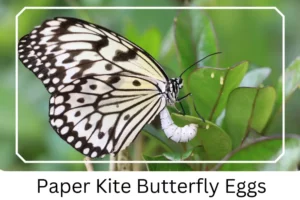Paper Kite (Idea leuconoe)
The Paper Kite butterfly, belonging to the nymph family of butterflies, captivates the hearts of butterfly enthusiasts worldwide with its striking appearance. This species is celebrated for its elegant black and white coloration, which adds to its sophisticated beauty. With 23 different subspecies, the Paper Kite is not only diverse in its genetic makeup but also widespread in its distribution, making it a fascinating subject of study and admiration in the butterfly world.
Scientific Classification
- Family: Nymphalidae
- Genus: Idea
- Common names: Rice Paper Butterfly
- Scientific Name: Idea leuconoe
Overview
Known for its serene flight and distinctive color pattern, the Rice Paper butterfly is a remarkable example of nature’s artistry. Found across various parts of Asia and extending to Northern Australia, these butterflies thrive in coastal mangrove swamps, showcasing their adaptability and resilience. The lifecycle of the Paper Kite, from its uniquely colored caterpillar stage to the majestic adult form, reveals a journey of transformation and survival. Engaging with this species offers insights into the complex interplay between biology, ecology, and the sheer beauty of the natural world.
Description and Identification
Caterpillar
The Paper Kite caterpillar exhibits visual similarities to its adult counterpart, with a mature larva measuring about 0.5 inches. It features a white body adorned with black spots and elongated spines, an orangish head with two horn-like black structures, and a yellow anal plate. These caterpillars may live solitarily or in small clusters, showcasing early signs of the species’ distinct patterns.
Pupa
The chrysalis stage of the Tree Nymph displays a bright gold coloration with ten black spines protruding from its ventral side, and a curved thorax marked with short black spines along the antennae. This stage signifies the transition into the adult form, hinting at the butterfly’s impending beauty.
Adult Butterfly
Sexual Dimorphism: Not present, as both sexes share the same appearance.
Color and Appearance: The wings, both in the open and closed state, feature a translucent silvery-white base with black markings that include dark dots and swooping lines, similar to the Idea lynceus butterfly, with a soft yellow to cream coloration on the underside.

 Average Wingspan: Ranges from 95 mm to 114 mm (3.75 to 4.5 inches), showcasing the butterfly’s substantial size.
Average Wingspan: Ranges from 95 mm to 114 mm (3.75 to 4.5 inches), showcasing the butterfly’s substantial size.
Flight Pattern: Characterized by a slow and graceful movement, adding to its elegance.
Eggs

Paper Kite Butterfly Eggs
The eggs of the Paper Kite are light yellow and laid individually, marking the beginning of a new lifecycle.
Quick Facts | |
| Distribution | Spans across Asia, including Thailand, Malaysia, the Philippines, Southern Taiwan, and extends to Northern Australia. |
| Habitat | Primarily found in the coastal mangrove swamps, indicating a preference for humid, coastal environments. |
| Lifespan of Adults | Estimated between 6 to 9 months, varying with environmental conditions. |
| Host Plants | Includes Parsonsia species such as Tylophora hispida, Parsonsia helicandra, Parsonsia spiralis, and Cynanchum formosanum, crucial for larval development. |
| Adult Diet | Primarily consists of flower nectar, highlighting the species’ role in pollination. |
How to Identify Paper Kite Butterfly?
Identifying the Paper Kite butterfly involves looking for its distinctive black and white wing patterns, which are visible whether the wings are spread open or closed. The translucent silvery-white base of the wings, adorned with intricate black markings, sets it apart from other species. The slow, graceful flight pattern and the substantial wingspan of up to 4.5 inches further aid in recognition. Observing these characteristics, along with the unique golden chrysalis and the habitat preferences, can help enthusiasts and researchers alike to accurately identify this beautiful butterfly in the wild.
Did You Know?
- The Paper Kite is the largest member of the milkweed butterfly family, standing out for its size and visual appeal.
- Due to their diet on venomous host plants from the Parsonsia species, both the larvae and adult butterflies possess toxic properties, which serve as a defense mechanism against predators.
- This species is capable of a form of mimicry, where its appearance can deter predators by mimicking the visual cues of other toxic butterflies.
Conclusion
The Paper Kite butterfly is a testament to the beauty and complexity of nature, embodying elegance, resilience, and a captivating lifecycle. From its early days as a distinctively marked caterpillar to its breathtaking adult form, this butterfly continues to fascinate and inspire. Understanding its characteristics, habitat, and ecological role enriches our appreciation for the biodiversity of our planet, reminding us of the intricate connections within the natural world.
Paper Kite Butterfly Pictures

Scientific Classification

- Family: Nymphalidae
- Genus: Idea
- Common names: Rice Paper Butterfly
- Scientific Name: Idea leuconoe







